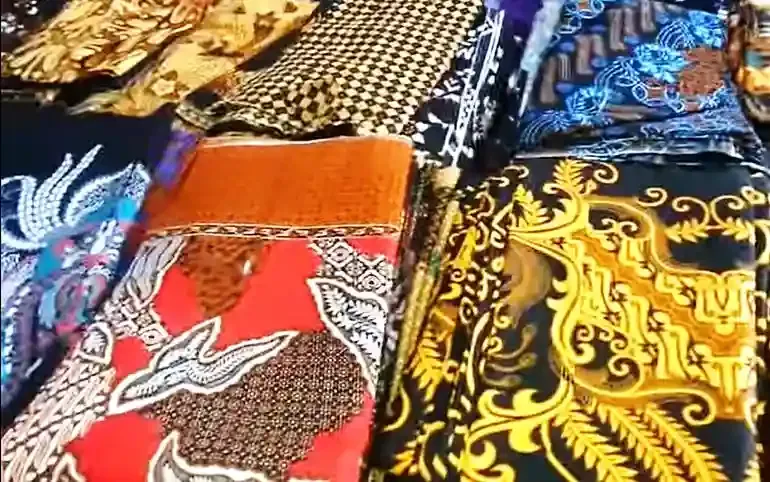Batik is a traditional Indonesian technique of wax-resist dyeing on fabric. It involves applying wax to the parts of a fabric that are meant to remain uncolored, and then dyeing the fabric. The waxed areas resist the dye and remain the original color, while the unwaxed areas absorb the dye and take on the color of the dye.
There are many different kinds of batik, each with its own unique style and characteristics. Some examples include Javanese batik, Solo batik, Madurese batik, and Coastal batik. These types of batik often vary in their designs, colors, and the techniques used to create them.
Batik can be done on a variety of fabrics including cotton, silk, and rayon. It is a time-consuming process that requires skill and patience. Batik designs can range from simple geometric patterns to complex figurative motifs, and they are often inspired by traditional Indonesian culture and mythology.
Batik is an important part of Indonesian culture and has been practiced for centuries. It is often used to make clothing, home decor items, and art pieces. Batik has also gained popularity around the world and is now produced in many countries.
Batik is a unique form of textile art that has been widely appreciated for its intricate designs and vibrant colors. In addition to being a popular art form in Indonesia, Batik has also gained popularity in other countries, including Malaysia, Thailand, India, and parts of Africa.
The Batik-making process involves a series of steps that require a great deal of attention to detail and precision. The fabric is first washed and dried to remove any impurities, and then a design is drawn onto the fabric using a pencil or a special tool called a canting, which is a small pen-like device used to apply hot wax to the fabric. The wax is then allowed to cool and harden, creating a barrier that will resist the dye.
The fabric is then immersed in a dye bath, and the dye is absorbed into the unwaxed areas of the fabric. The fabric is rinsed and dried, and the wax is removed using boiling water. This process is repeated for each color in the design, with wax being applied to different parts of the fabric to create a layered effect.
Batik designs can be highly intricate and detailed, with patterns ranging from floral and geometric motifs to intricate scenes from mythology or nature. In Indonesia, Batik is often worn for formal occasions such as weddings, and it is also used to make traditional clothing such as sarongs, kebaya, and batik shirts for men.

